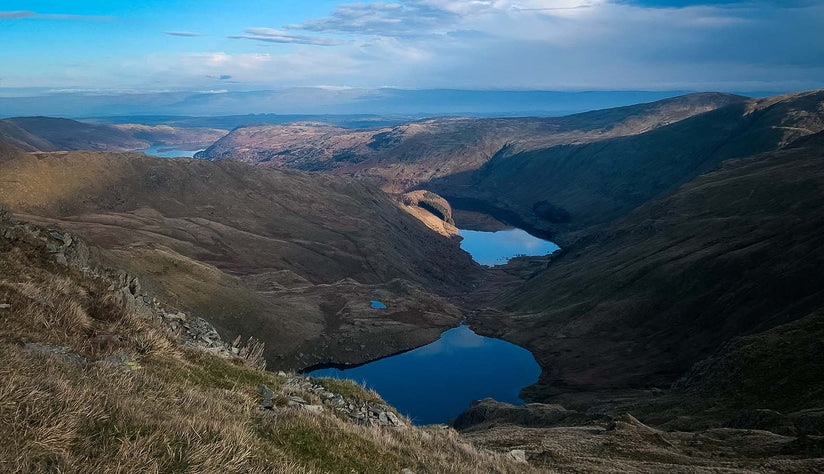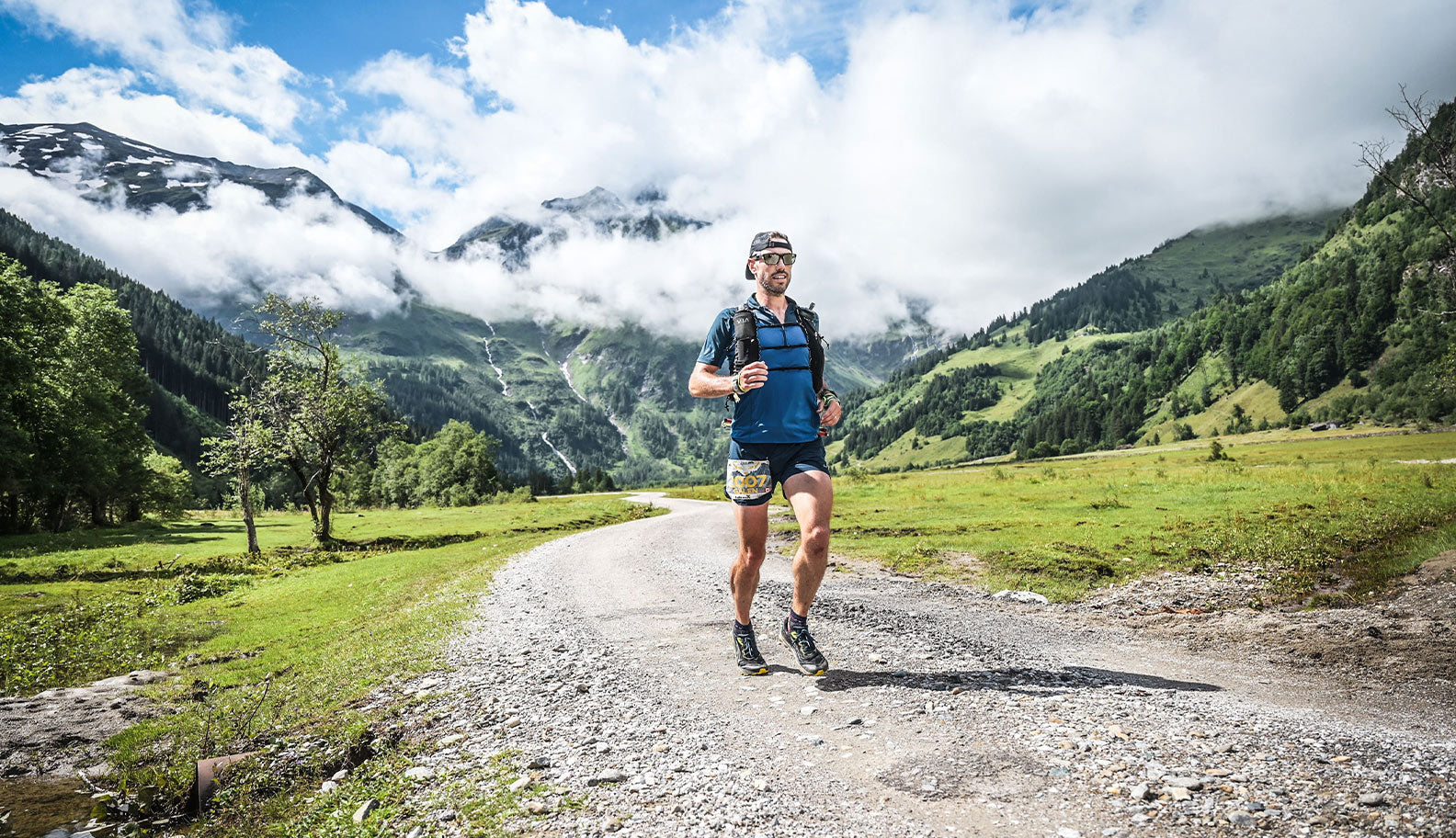#TeamMontane ultra running athlete Galen Reynolds is regularly found podiuming in high alpine races, such as the Tor des Géants and SwissPeaks360. Just take a look at Galen’s recap of the TDG to find out about his mountain race experience to date! To succeed in these global mountain races not only requires lightweight, protective trail running gear for challenging environment's, but months of tailored, consistent training. For Galen, this also involves altitude training in the summer months. We catch up with him to find out more about his altitude training, the science behind this and how you can build this into your own training routine…
When I began running mountain ultras in 2015, I was sceptical of the real benefits of altitude training. People talk so much about it, but I figured it was like chaffing cream - it gets disproportionate attention. After 14 high-altitude ultras and being slapped silly by lack of oxygen twice, I'm a believer! I'm Galen Reynolds, a professional ultra trail runner for Montane, and I love big mountains.
Altitude training has become an integral part of my training during the summer months. I take on high alpine races like the Tor des Geants and SwissPeaks360 - the Alps' two most famous 200-milers over rugged mountains. In the high mountains, the views are spectacular, the routes are exceedingly challenging, the adventures endless, and the espresso and meals in mountain huts also just taste better. As soon as the snow melts on the high passes, I'm either in the mountains, adventuring and training or planning new routes.
What is Altitude Training?
Altitude training is simply trying to get the body used to having less oxygen. It is most commonly done by spending time at high altitudes, typically 2,000m and above, where the oxygen is less. The body will begin to produce more red blood cells to help bring the limited amount of oxygen around the body and, importantly for endurance athletes, to the muscles.
How does altitude sickness fit in, and how can it be prevented?
This isn't fake news; altitude sickness is real. It can be debilitating and uncomfortable with side effects of lower energy, bad headaches, throwing up and passing out, and I'm not describing the weekend.
This happens because parts of the body, including the brain, lack oxygen, but there are ways to minimise the effects or eliminate them altogether.
Reducing stressors is the easiest and least expensive strategy. Stay hydrated, sleep lots, eat healthy, eat plenty and hold off on that pint, no matter how tempting. Easing into training is a big help in the first couple of days at altitude. As the stressors don't compound right away, some people feel great on the first day at altitude, but they overdo it and are sofa decorations for the next couple of days.
For the huge mountains, the easiest way is to head to altitude in stages, break up the entire amount in sections over several days; this isn't typically a problem in the Alps but can be helpful in the Andes and Himalayas, where the elevation is over 5,000m.
Benefits of Altitude Training
The science will say things like an increase in haemoglobin (the amount of oxygen in the blood), increased aerobic capacity, and increased tolerance to lactate acid.
In real terms, this will help avoid having jelly legs and no power when getting over a mountain pass in a race or training. The effects are less noticeable when running downhill or even easy flats when the overall demands are lower. The real test is when the intensity increases, like a steep mountain pass in a race and the altitude trained athletes are separated from the dejected jellyfish.
How To Build Altitude Training Into your Training
Elite athletes have the budget and time to spend weeks at altitude. Cyclists take off to Tenerife, triathletes head for Sierra Nevada, and trail runners reach the French ski town of Tignes at 2,100m.
Outside of becoming a full-time elite athlete, there are a couple of ways to avoid being excessively dominated by altitude.
1) Head to altitude for as long as possible before a race or high-altitude adventure. The previous thinking was to arrive at altitude either two weeks or just before the target event. The reasoning was that it took two weeks to acclimate to the elevation; any shorter, and the body would be exhausted from the effort of working overtime to create new red blood cells. Recent studies showed individuals have a large variation in the time to become acclimated, ranging from 6 weeks to several days. Now, the thinking is to get to altitude for as long as your life commitments will allow before the event.
2) Altitude simulation kit. While more accessible and less destructive to life commitments, altitude tents and masks aren't cheap. Fortunately, all the kit can be rented. The best options are tents to sleep in at night and a mask for stationary training on a treadmill or bike. There are options like altitude rooms and even altitude training hotels (the actual hotel is at sea level but they reduce the oxygen in the hotel), but let's keep this civil.
How I Handle Altitude Training
In my family with three young boys, I can't relocate everyone to small mountain towns and convince them to give me foot massages when I return from long training sessions. But I've taken a hybrid approach. At night, I crawl into my altitude tent, a see-through plastic tent that sits on top of my bed. I crank up the altitude machine, set at about 2,700m and listen to the soothing sounds of the machine, which is like Darth Vadar struggling to breathe more than usual. For the second training session of the day, I use an altitude mask connected to the same machine while on the bike trainer, spinning easily in heart rate zones Z1 or Z2.
I track the elevation I sleep at each night, the sleep time and my blood oxygen saturation measurement every morning before leaving the tent. If either my sleep or oxygen gets too low, I'll know it because I will feel like three piles of elephant poop; I'll try and get more sleep and reduce the altitude.
To go along with the nightly sleeping, I will hook up the same machine to a mask and use it on the bike trainer for more time at simulated elevation. I'll try and get these twice a week and set the altitude to 3,000m.
The icing on the cake is getting to altitude for a week before an A race, like Tor des Geants. Since it's taper time, my training stress comes down, and I've found, through trial and error, this enables me to feel comfortable at altitude and be close to my sea-level performance baselines.
What is VO2 Max and How Does Altitude Affect It
On the surface level, VO2 max is the maximum rate of oxygen consumption during exercise. The higher the rate, the better. You often hear athletes sit around cafes drinking espresso and boasting about their VO2 max numbers, expressed in a number usually around 35 to 55. Incidentally it is much higher for elite athletes, with the highest ever recorded recently by gold medalist triathlete Kristian Blummenfelt of over 100. For us nerds, this VO2 max is measured in mL/kg/min - roughly how much oxygen is processed per a person's weight in one minute.
In the short term, our VO2 max declines at altitude, given that less oxygen is available. But stay longer at altitude and that's when the real VO2 max benefits come out to play.
As the body produces more red blood cells and enhances oxygen transport, a person's VO2 max increases, both at altitude and when returning to lower altitudes. For endurance athletes, altitude is used to increase their VO2 max.
Concluding thoughts
Altitude is tricky, like nutrition. Everyone has an opinion on best practices, but each person has to find what works for them. It took me years to hone what works best for me and my constraints. I would try different things, write down the results and keep tweaking things to perform better.
Be a tryatarian. Try, take what works, adjust, try again.
There are benefits beyond training. As Dr. Peter Attia of podcasting fame says, 'VO2 max is the greatest predictor of lifespan.'
Tryatarian
NOUN
- A person who tries stuff a lot.
- Preferably, a person who tries something learns from it and makes improvements for the next try.
Training at altitude requires lightweight, durable clothing and equipment to help you push your performance in challenging mountain environments. Explore Montane's new season gear to get started.
For trail running this season, some of our suggested gear picks include the ultra lightweight Dart Nano Base Layer, Montane's popular high stretch Gecko Running Hydration Vests and the packable Featherlite Nano Windproof Jacket - the ultimate jacket for exposed trail running in the mountains.














